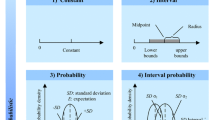Abstract
Navigational range is an important attribute of autonomous underwater vehicles (AUVs), and drag reduction efforts have been pursued to improve overall efficiency. Improved efficiency results in a more capable vehicle over all. Historically, the majority of research focused on drag reduction has been concentrated on the optimization of vehicle hull geometry. The influence of the hull appendages on drag, however, has been largely ignored owing to their smaller size. In this study, the impacts of appendage size and position on vehicle drag are investigated using a computational fluid dynamics method. The results indicate that appendages increase more drag because of their impact on the development of turbulence. The investigation of the interactions between multiple appendages fixed on a vehicle hull shows that optimization is necessary for drag reduction. This paper presents an arrangement optimization method for AUV appendages based on the Kriging approximation model and the multi-island genetic algorithm. The results of the optimization show that appendage influence on hydrodynamic performance is directly proportional to its size, and that a distributed arrangement is beneficial for drag reduction.















Similar content being viewed by others
References
Yamamoto I (2015) Research on next autonomous underwater vehicle for longer distance cruising. IFAC-PapersOnLine 48(2):173–176
Vasudev K, Sharma R, Bhattacharyya S (2014) A CAGD + CFD integrated optimization model for design of AUVs. In: IEEE OCEANS 2014, TAIPEI, pp 1–8
Stevenson P, Furlong M, Dormer D (2007) AUV shapes-combining the practical and hydrodynamic considerations. In: IEEE OCEANS 2007, Europe, pp 1–6
Schweyher H, Lutz T, Wagner S (1996) An optimization tool for axisymmetric bodies of minimum drag. In: 2nd international airship conference, Stuttgart/Friedrichshafen, pp 1–8
Myring DF (1976) A theoretical study of body drag in subcritical axisymmetric flow. Aeronaut Q 27(3):186–194
Gao T et al (2016) Hull shape optimization for autonomous underwater vehicles using CFD. Eng Appl Comput Fluid Mech 10(1):601–609
Allen B, Vorus WS, Prestero T (2000) Propulsion system performance enhancements on REMUS AUVs. In: IEEE OCEANS 2000 MTS/IEEE conference and exhibition, pp 1869–1873
Groves NC, Huang TT, Chang MS (1989) Geometric characteristics of DARPA suboff models: (DTRC Model Nos. 5470 and 5471). David Taylor Research Center, Bremerton
OpenCFD OpenFOAM (2012) The open source CFD toolkit user guide. OpenFOAM Foundation, Dordrecht
Wu X et al (2015) An effective CFD approach for marine-vehicle maneuvering simulation based on the hybrid reference frames method. Ocean Eng 109:83–92
Dantas JLD, Barros EAd (2013) Numerical analysis of control surface effects on AUV manoeuvrability. Appl Ocean Res 42:168–181
Gao T et al (2018) A time-efficient CFD approach for hydrodynamic coefficient determination and model simplification of submarine. Ocean Eng 154:16–26
Liu H-L, Huang TT (1998) Summary of DARPA SUBOFF experimental program data. DTIC Document, pp 1–28
Wang G et al (2007) Dynamics simulation and optimization of multibody system with random parameters. In: International conference on mechanical engineering and mechanics 2007, pp 1019–1023
Ahmadi M et al (2005) Application of the central composite design and response surface methodology to the advanced treatment of olive oil processing wastewater using Fenton’s peroxidation. J Hazard Mater 123(1):187–195
Hedayat AS, Sloane NJA, Stufken J (1999) Orthogonal arrays: theory and applications. Springer Science & Business Media, Berlin
Fang K-T et al (2000) Uniform design: theory and application. Technometrics 42(3):237–248
Tang B (2008) Latin hypercube designs. In: Ruggeri F, Kenett RS, Faltin FW (eds) Encyclopedia of statistics in quality and reliability. Wiley, Chichester
Park J-S (1994) Optimal latin-hypercube designs for computer experiments. J Stat Plan Inference 39(1):95–111
Wang W et al (2011) Parameters optimization of laser shot peening based on multi-island genetic algorithm. Appl Mech Mater 43:387–390
Hu X et al (2014) Optimization design of satellite separation systems based on multi-island genetic algorithm. Adv Space Res 53(5):870–876
Acknowledgements
This work was supported by The National Key Research and Development Program of China (Grant number 2016YFC0300802), and the State Key Laboratory of Robotics of China (Grant number 2017-Z08).
Author information
Authors and Affiliations
Corresponding author
About this article
Cite this article
Wang, Y., Gao, T., Pang, Y. et al. Investigation and optimization of appendage influence on the hydrodynamic performance of AUVs. J Mar Sci Technol 24, 297–305 (2019). https://doi.org/10.1007/s00773-018-0558-y
Received:
Accepted:
Published:
Issue Date:
DOI: https://doi.org/10.1007/s00773-018-0558-y




